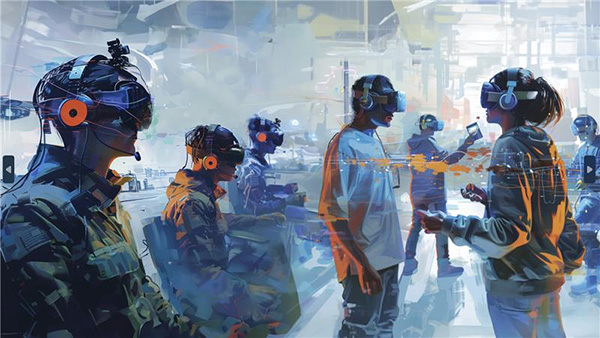Aviation’s workforce gap is real. XR training builds readiness faster, safer, and smarter—turning virtual reps into real-world results.
by David Dwyer, COO of Mass Virtual
The aviation industry isn’t heading toward a workforce problem. It’s already in it.
Veteran mechanics are aging out. New techs are onboarding into a rapidly evolving fleet mix, where they’re expected to jump between legacy systems and next-generation aircraft with minimal ramp-up. The old training model? It can’t keep up.
Meanwhile, the pressure on technical teams keeps rising while the resources evaporate. Aircraft availability is tighter. The instructor’s bandwidth is stretched thin. Costs are climbing. Every delay in technician readiness ripples downstream as increased downtime, compliance risk, and lost flight hours.
This isn’t just a training issue. It’s an operational readiness problem. Without change, operational cracks will widen where they hurt most: safety, schedules, and bottom lines.
Over the next two decades, airlines and MROs will need more than 610,000 mechanics and technicians. Depending on complexity, training one mechanic can run anywhere from $8,000 to $80,000. At that scale, the traditional approach is dead on arrival.
It’s not just the cost issue, it’s a capability issue. New hires are expected to operate across multiple platforms with less aircraft access and fewer experienced mentors. Fleet diversity is increasing. Platform turnover is accelerating. Regulatory expectations continue to evolve. Meanwhile, proficiency windows keep shrinking.
Most training still relies on classroom time, limited hands-on sessions, and inconsistent exposure. That may have worked when fleets were simpler, and turnover was slower. It’s not anymore. Today’s aviation technicians must be ready on day one: confident, capable, and consistent.

Extended reality (XR) is a comprehensive term that includes virtual reality (VR), where learners operate in fully digital environments, and augmented reality (AR), which overlays information on top of the real world.
XR isn’t a futuristic concept. It’s here, it’s now, and it’s operational. XR immerses learners into environments where they rehearse, make mistakes, build muscle memory, and master tasks — without pulling aircraft out of service or draining instructor hours.
Think of XR as a flight simulator — but for maintenance. Real tasks. Real procedures. Real impact. With XR, teams can:
It’s not about stacking more content onto technicians to drown in. It’s about delivering the right repetition at the right time. Studies show XR improves retention by up to 75%, leading to fewer errors, faster onboarding, and greater confidence on the job.
Take landing gear retraction, a rare but critical task. One missed step can trigger serious consequences.
Now imagine a technician who’s already run the full procedure in XR earlier that week. They’ve walked through every step, practiced torque specs, and built spatial familiarity with the compartment layout.
When they step onto the real aircraft, they’re not guessing. They’re ready. That’s not just efficient — it’s safer, faster, and more reliable.
XR only works when the experience mirrors reality. Mismatch the tools? Miss a step? Short-circuit the workflow? You lose trust and the potential of adoption.
Many XR rollouts fall short by prioritizing flash over function. But technicians spot the difference immediately. The simulation has to feel right. When it does, they engage, learn, and retain. When it doesn’t, the headset ends up on the shelf.
To be effective, XR training must meet the same standard as the work itself.
XR eliminates the traditional bottlenecks of hands-on training. One XR module can train hundreds of technicians across multiple sites. No aircraft pulled. No scheduling nightmares. No downtime.
In practice, XR delivers:
XR doesn’t replace instructors. It amplifies them by freeing them to coach higher, not just teach basics.
According to PwC, XR-trained employees complete training four times faster and report 275% more confidence applying what they’ve learned. That confidence translates directly into stronger performance.
In real-world aviation environments, that translates into:
These aren’t future-state aspirations. They’re operational results are happening now.
The gap between training and job performance is real — and growing. XR is the bridge needed to overcome this gap.
XR delivers the repetition teams need, the confidence leaders demand, and the operational efficiency companies depend on. If the goal is to build and maintain a workforce that’s ready to deliver on day one, XR isn’t a discussion up for debate, it’s a requirement.
About the Author:
David (Dave) Dwyer is the Chief Operating Officer (COO) of Mass Virtual, where he leads operations and strategy to deliver transformative extended reality (XR) solutions focused on improving human performance. With extensive global experience in program management, IT, sales, and marketing, Dave’s diverse background is unified by a customer-first philosophy. Guided by the principle to “make it work,” he and the team at Mass Virtual successfully scaled the business in a hypergrowth stage for three consecutive years. A passionate advocate for leadership development, he mentors students through programs at UCF and local high schools, believing in the importance of building strong leaders for the future.
In this episode, I sat down with Beejan Giga, Director | Partner and Caleb Emerson, Senior Results Manager at Carpedia International. We discussed the insights behind their recent Industry Today article, “Thinking Three Moves Ahead” and together we explored how manufacturers can plan more strategically, align with their suppliers, and build the operational discipline needed to support intentional, sustainable growth. It was a conversation packed with practical perspectives on navigating a fast-changing industry landscape.